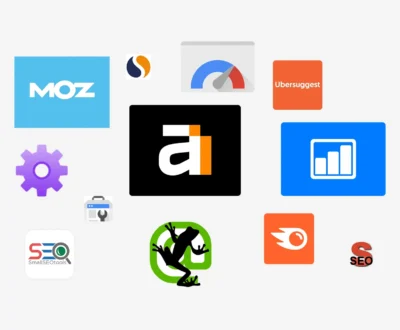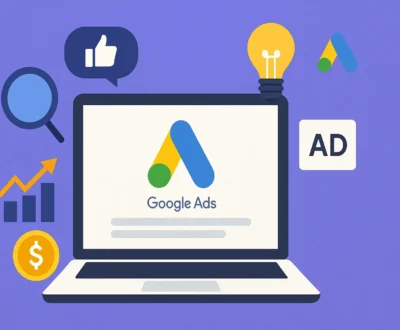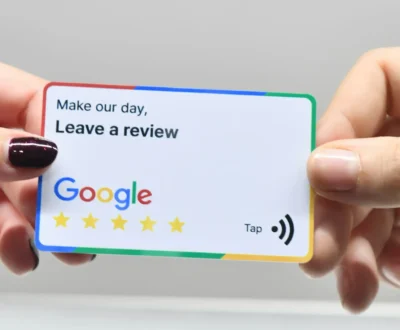How to Boost Your Business’s Visibility with Google Ads and SEO: Simple Tips for Beginners
- Oktober 30, 2024
- Latest Articles on SEO Trends and Tips
In today’s digital age, having an online presence is essential for any business. But with millions of websites competing for attention, how can you ensure that your business stands out? Using Google Ads and SEO (Search Engine Optimization) can make a significant difference, helping you reach new customers and grow your business effectively. This guide will walk you through the basics of each and provide beginner-friendly strategies for making the most out of Google Ads and SEO.

1. Understanding SEO and Google Ads: How They Work Together
SEO is a set of practices designed to optimize your website, making it more attractive to search engines like Google. By improving factors like keyword usage, website structure, and content quality, SEO can help your site appear higher in organic (unpaid) search results. SEO requires patience, as it takes time to see results, but the benefits are long-term.
Google Ads, on the other hand, are paid advertisements displayed on Google’s search engine results pages (SERPs) and across Google’s advertising network. With Google Ads, you can target specific keywords or audiences, meaning your ads appear only when users search for terms related to your business. This allows for more immediate visibility compared to SEO, though it requires ongoing investment to maintain.
Together, SEO and Google Ads create a powerful strategy: SEO strengthens your site’s organic presence, while Google Ads provides immediate visibility. Balancing these two approaches can help attract a steady flow of visitors and customers to your site.
2. Getting Started with Google Ads: A Step-by-Step Guide for Beginners
Google Ads may seem complex, but getting started doesn’t have to be overwhelming. Here’s a simple approach to setting up your first campaign:
Step 1: Define Your Goals
Before creating a campaign, decide what you want to achieve. Are you trying to drive more traffic to your website, generate leads, or boost sales? Clear goals will guide your ad strategy and help you measure success effectively.
Step 2: Choose the Right Campaign Type
Google Ads offers various campaign types, including Search, Display, Shopping, and Video. For beginners, starting with a Search campaign is often the best choice, as it targets users actively searching for products or services like yours.
Step 3: Set Your Budget and Bidding Strategy
Determine a daily or monthly budget based on what you can afford and are willing to invest. Then choose a bidding strategy—such as Cost-Per-Click (CPC)—to control how much you pay when users click on your ad. If you’re just starting, automated bidding options, like Maximize Clicks, can help manage costs.
Step 4: Conduct Keyword Research
Use tools like Google’s Keyword Planner to find relevant keywords for your business. Focus on keywords that are specific to your services, as these will likely attract customers with high purchase intent. Consider using a mix of high-competition and low-competition keywords for balance.
Step 5: Create Compelling Ads
Write ads that are engaging, concise, and directly relevant to the keywords you’ve chosen. Include a clear call-to-action (e.g., “Shop Now” or “Get a Free Quote”) to encourage users to click. Google allows up to three headlines and two descriptions per ad, so use this space wisely.
Step 6: Launch and Monitor Your Campaign
Once your ads are live, monitor performance using Google Ads’ metrics like CTR (click-through rate), conversions, and CPC. Adjust your keywords, budget, or ad content based on what works best for your target audience.
3. Building an SEO Foundation: Key Elements for Beginners
While Google Ads can help bring immediate results, SEO is critical for long-term visibility. Here are the basics of a strong SEO foundation:
Step 1: Focus on Keyword Optimization
Just as with Google Ads, keywords are the backbone of SEO. Identify relevant keywords your target audience uses and incorporate them naturally into your website’s pages, product descriptions, blog posts, and metadata (like titles and descriptions).
Step 2: Improve On-Page SEO
On-page SEO refers to optimizing the content and structure of your web pages. Make sure each page has:
- A Unique Title Tag that includes primary keywords.
- A Meta Description that is concise and inviting.
- Headers (H1, H2, etc.) with keywords to help search engines understand the page’s structure.
- Image Alt Text with keywords, helping visually impaired users and search engines alike.
Step 3: Create Quality Content
Google prioritizes high-quality content, so create informative, relevant articles or blog posts that address your customers’ needs or questions. Regularly updating your website with new content helps keep your site active and appealing to search engines.
Step 4: Work on Link Building
Backlinks (links from other sites to yours) are essential for SEO, as they indicate to Google that your site is trustworthy. Start by reaching out to local or industry-specific blogs, directories, and websites to generate backlinks. Consider guest posting on other sites or collaborating with businesses that have similar audiences.
Step 5: Optimize for Mobile and Speed
With more users browsing on mobile devices, Google now prioritizes mobile-friendly sites in its rankings. Use Google’s Mobile-Friendly Test tool to check your site. Additionally, a fast-loading site is crucial for user experience, so aim for loading times under three seconds by compressing images, minimizing redirects, and using faster hosting.
4. Leveraging Google Ads and SEO Together: Pro Tips
Integrating SEO and Google Ads can help you maximize your results and boost visibility. Here’s how:
Tip 1: Use Data from Google Ads to Improve SEO
Google Ads data can provide valuable insights into the keywords that perform well, user demographics, and conversion rates. Use this data to refine your SEO strategy by focusing on high-performing keywords and optimizing your site for those user segments.
Tip 2: Reinforce Organic Keywords with Google Ads
If certain keywords are crucial for your business but are highly competitive, consider using Google Ads to bid on those keywords while you work on ranking organically. This dual approach helps ensure visibility as your organic SEO improves over time.
Tip 3: Retarget Website Visitors with Google Ads
Google Ads allows you to retarget users who visited your website but didn’t take any action. Setting up a Remarketing campaign can help bring these visitors back to your site, reinforcing your brand presence and potentially converting lost leads.
5. Tracking and Measuring Success
Both Google Ads and SEO provide tools to track your progress. Google Analytics is a must-have, offering insights into visitor behavior, traffic sources, and more. For SEO, tools like Google Search Console let you monitor organic rankings, keyword performance, and click-through rates. Regularly review and analyze these metrics to adjust your strategies and improve results.
6. Staying Updated and Adapting to Changes
Both Google Ads and SEO are dynamic fields that frequently evolve. Keep up with industry blogs, attend webinars, and explore updates from Google’s own resources. Staying informed allows you to adjust your strategies and maintain a competitive edge.
For businesses looking to enhance their online presence but lacking the time or expertise to manage SEO themselves, buying SEO services can be an effective solution. Partnering with a professional SEO agency can provide access to specialized knowledge, from in-depth keyword research to advanced content optimization and technical SEO strategies. These services often include monitoring and adjusting campaigns based on performance data, ensuring that your website remains competitive in search rankings.
Using Google Ads and SEO together provides a well-rounded approach to improving your business’s online presence. By setting clear goals, researching keywords, creating quality content, and constantly refining your strategy, you can build a strong foundation for both immediate and sustained success. Although it requires consistent effort, the rewards of better visibility, increased traffic, and new customers make it worth the investment.
About us and this blog
We are a digital marketing company with a focus on helping our customers achieve great results across several key areas.
Request a free quote
We offer professional SEO services that help websites increase their organic search score drastically in order to compete for the highest rankings even when it comes to highly competitive keywords.








